The Art of Professional Wrestling: A Deep Dive into the World of Entertainment and Athleticism
Professional wrestling is more than just grappling in a ring—it’s a dynamic blend of athleticism, storytelling, and showmanship. For decades, this form of entertainment has captivated millions of fans worldwide. But what makes professional wrestling stand out? Why do people flock to arenas or tune in on TV for what’s often called “sports entertainment”? This article explores the intricacies of professional wrestling as both an art and a sport, delving into the history, psychology, and physical demands that make it unique.

Conclusion
WWE has created a treasure trove of legendary characters that will be remembered for generations. From the larger-than-life Hulk Hogan to the modern dominance of Roman Reigns as the Tribal Chief, each of these characters brought something unique to the table. Their legacies continue to shape the future of WWE and inspire new generations of fans. While wrestling may evolve, these characters have cemented their place in the pantheon of sports entertainment.
What is Professional Wrestling?
Professional wrestling, at its core, is a choreographed form of combat sport combined with elements of theater. Wrestlers perform predetermined outcomes while displaying remarkable athletic prowess. It strikes a fine balance between real athleticism and the illusion of conflict. Wrestlers take real hits, execute complicated moves, and endure physical exhaustion, but the ultimate result is scripted, designed to entertain the audience.
Think of it as a live-action soap opera with combat. From larger-than-life characters to rivalries steeped in drama, professional wrestling thrives on emotional engagement. And while the results may be predetermined, the journey to that outcome is filled with legitimate skill and training.
The History of Professional Wrestling
Wrestling dates back thousands of years, with early forms found in ancient Greece and Egypt. It evolved into a competitive sport during the early 20th century, with various forms of wrestling leagues forming around the world. However, it wasn’t until the rise of television in the 1950s and 60s that wrestling became a major spectacle.
Leagues like the National Wrestling Alliance (NWA) in the U.S. and wrestling promotions in Japan gained prominence. By the 1980s, wrestling transformed into full-scale entertainment, thanks largely to figures like Vince McMahon, who rebranded the WWF (now WWE) into a global powerhouse by mixing celebrity appeal, dramatic storytelling, and extravagant shows.
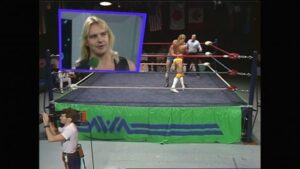
The Craft Behind the Curtain
Behind every wrestling match, there’s a carefully crafted story. Storytelling in professional wrestling is essential. Each match is a chapter in an ongoing narrative, often involving feuds, betrayals, and alliances. Wrestlers play characters—good guys, or “faces,” and bad guys, or “heels.” This dynamic helps build tension and allows the audience to root for or against them.
The psychology of a wrestling match involves pacing, timing, and crowd interaction. Wrestlers understand how to manipulate emotions, from moments of tension to explosive comebacks. They choreograph sequences of moves in a way that seems spontaneous yet follows a narrative arc.
The Role of Promoters and Bookers
Promoters and bookers (those who decide match outcomes and storylines) are pivotal to the success of wrestling. They craft story arcs that can last weeks, months, or even years, ensuring that fans remain invested. The booker’s job is to create a compelling reason for wrestlers to fight, often taking real-life tensions or drama and amplifying them for the ring. It’s not just about putting on matches—it’s about telling stories that keep fans coming back.

Athleticism and Physicality
Though the results of wrestling matches are predetermined, the physicality is very real. Wrestlers undergo intense training, not just to master moves but also to condition their bodies to withstand the grueling demands of performing multiple nights a week. Wrestling moves, from powerbombs to suplexes, require coordination and precision to minimize injury while still looking impactful.
Many wrestlers perform physically demanding moves that leave audiences in awe. Aerial techniques like moonsaults or high-risk maneuvers off the top rope showcase their athletic prowess. While these stunts may be scripted, the execution requires true physical skill and a high tolerance for pain.
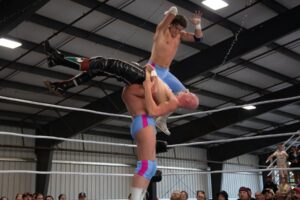
Theatricality and Showmanship
Professional wrestling isn’t just about brute strength. Theatrics play a massive role in elevating the sport. Wrestlers build personas that fans can either idolize or despise. From flashy costumes to signature catchphrases, everything is designed to stand out. A wrestler’s entrance, complete with music, pyrotechnics, and lighting, sets the tone before a match even begins.
Promos—wrestlers’ scripted speeches to hype up a match or feud—are another aspect of wrestling’s theatricality. Speaking on the mic is an art form itself. A great promo can turn a mid-tier wrestler into a main event star or make fans emotionally invested in an upcoming match.
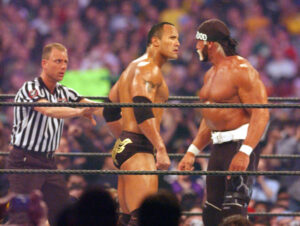
Professional Wrestling Moves and Techniques
Wrestling styles vary widely. Some wrestlers focus on technical, ground-based moves, while others adopt a more high-flying, aerial approach. Each wrestler has their own set of signature moves, designed to excite fans and finish their opponents.
Iconic moves like the Stone Cold Stunner, the Tombstone Piledriver, or the Frog Splash have become legendary within the industry. These finishing moves often signal the climax of a match, with the crowd erupting in excitement as they anticipate the final pinfall or submission.
The Importance of Storylines
Wrestling without storylines would just be combat. What sets professional wrestling apart from other sports is its deep investment in narratives. Rivalries can span years, and fans follow these arcs as if they were television dramas. Classic feuds, like those between “Stone Cold” Steve Austin and Vince McMahon or The Rock and John Cena, are etched into wrestling lore.
Storylines introduce emotional stakes. A match isn’t just a fight—it’s a culmination of personal drama, revenge plots, or championship aspirations.
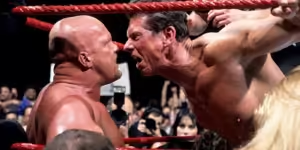
The Fans: The Lifeblood of Wrestling
Wrestling fans are unique. They’re vocal, passionate, and deeply invested in the characters and storylines. Their energy can elevate an average match into something spectacular. Wrestlers feed off this energy, often interacting with the crowd mid-match. The chants, cheers, and boos from the audience add an extra layer of drama.

Professional Wrestling Around the World
While the WWE dominates the U.S. market, wrestling has different forms worldwide. In Mexico, Lucha Libre emphasizes high-flying maneuvers and masked wrestlers, while Japan’s Strong Style focuses on stiff strikes and realistic grappling. British wrestling has its own tradition of technical mat wrestling, drawing from its World of Sport roots.
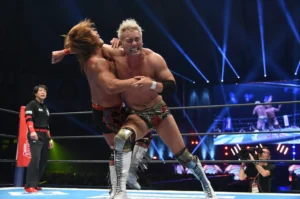
Behind the Scenes: What It Takes to Be a Pro Wrestler
Becoming a professional wrestler isn’t easy. It involves years of training, often starting at wrestling schools or academies. Wrestlers must learn how to protect their opponents while making the action look real. Injuries are common, and wrestlers face the constant challenge of recovering while staying in shape.
Conclusion
If you aren’t a wrestling fan you would probably think it’s fake. But as wrestling fans, we understood what it takes to be a wrestler, the pain, injuries, and schedules that could literally harm your body. But Pro wrestlers always enter into arena to entertain the fans if they don’t want to be.
watch other blogs here.




